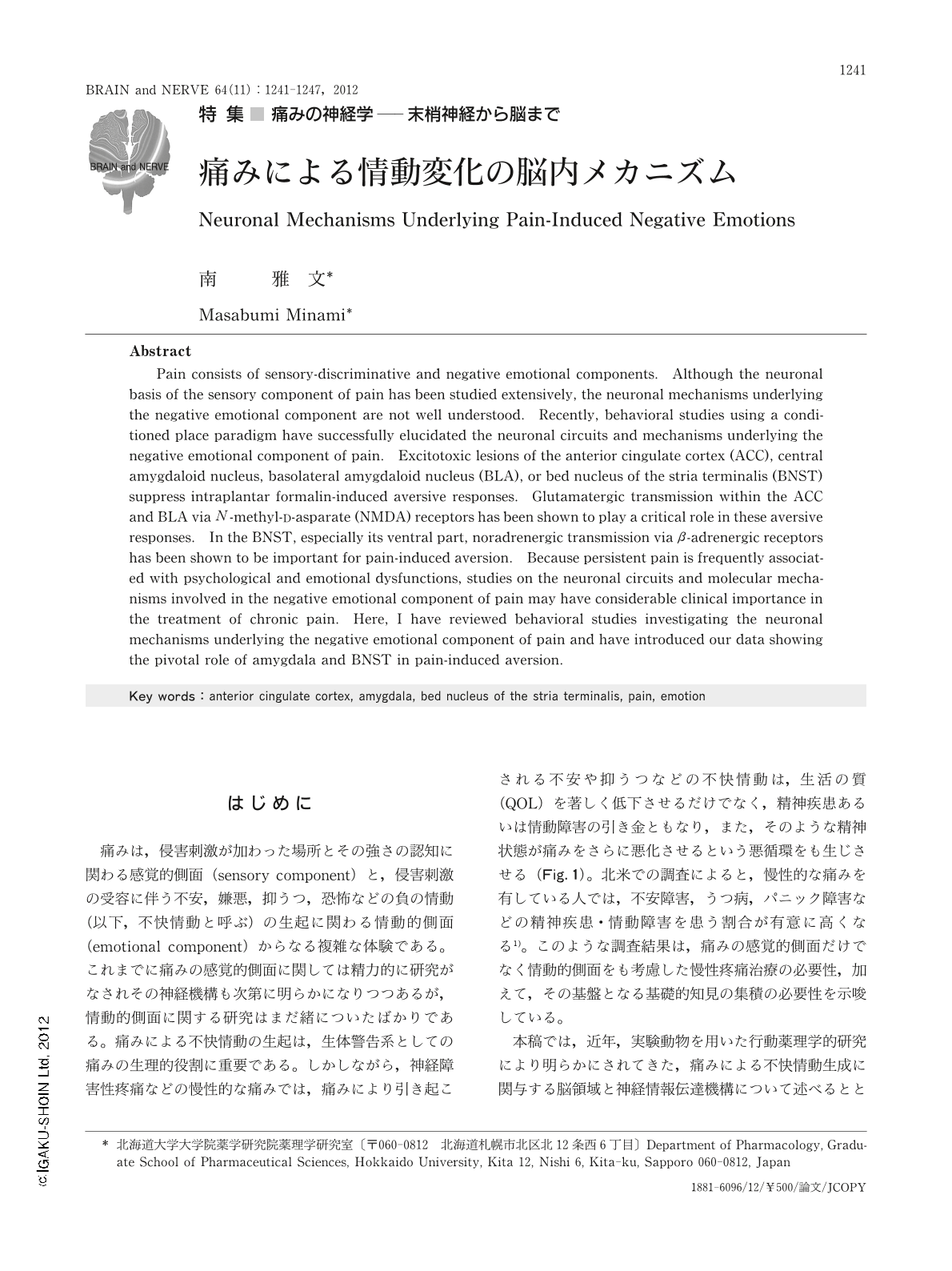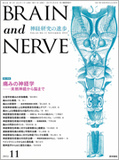Japanese
English
- 有料閲覧
- Abstract 文献概要
- 1ページ目 Look Inside
- 参考文献 Reference
はじめに
痛みは,侵害刺激が加わった場所とその強さの認知に関わる感覚的側面(sensory component)と,侵害刺激の受容に伴う不安,嫌悪,抑うつ,恐怖などの負の情動(以下,不快情動と呼ぶ)の生起に関わる情動的側面(emotional component)からなる複雑な体験である。これまでに痛みの感覚的側面に関しては精力的に研究がなされその神経機構も次第に明らかになりつつあるが,情動的側面に関する研究はまだ緒についたばかりである。痛みによる不快情動の生起は,生体警告系としての痛みの生理的役割に重要である。しかしながら,神経障害性疼痛などの慢性的な痛みでは,痛みにより引き起こされる不安や抑うつなどの不快情動は,生活の質(QOL)を著しく低下させるだけでなく,精神疾患あるいは情動障害の引き金ともなり,また,そのような精神状態が痛みをさらに悪化させるという悪循環をも生じさせる(Fig.1)。北米での調査によると,慢性的な痛みを有している人では,不安障害,うつ病,パニック障害などの精神疾患・情動障害を患う割合が有意に高くなる1)。このような調査結果は,痛みの感覚的側面だけでなく情動的側面をも考慮した慢性疼痛治療の必要性,加えて,その基盤となる基礎的知見の集積の必要性を示唆している。
本稿では,近年,実験動物を用いた行動薬理学的研究により明らかにされてきた,痛みによる不快情動生成に関与する脳領域と神経情報伝達機構について述べるとともに,神経障害性疼痛が情動に及ぼす影響についての最近の知見を紹介する。
Abstract
Pain consists of sensory-discriminative and negative emotional components. Although the neuronal basis of the sensory component of pain has been studied extensively, the neuronal mechanisms underlying the negative emotional component are not well understood. Recently, behavioral studies using a conditioned place paradigm have successfully elucidated the neuronal circuits and mechanisms underlying the negative emotional component of pain. Excitotoxic lesions of the anterior cingulate cortex (ACC), central amygdaloid nucleus, basolateral amygdaloid nucleus (BLA), or bed nucleus of the stria terminalis (BNST) suppress intraplantar formalin-induced aversive responses. Glutamatergic transmission within the ACC and BLA via N-methyl-D-asparate (NMDA) receptors has been shown to play a critical role in these aversive responses. In the BNST, especially its ventral part, noradrenergic transmission via β-adrenergic receptors has been shown to be important for pain-induced aversion. Because persistent pain is frequently associated with psychological and emotional dysfunctions, studies on the neuronal circuits and molecular mechanisms involved in the negative emotional component of pain may have considerable clinical importance in the treatment of chronic pain. Here, I have reviewed behavioral studies investigating the neuronal mechanisms underlying the negative emotional component of pain and have introduced our data showing the pivotal role of amygdala and BNST in pain-induced aversion.

Copyright © 2012, Igaku-Shoin Ltd. All rights reserved.


